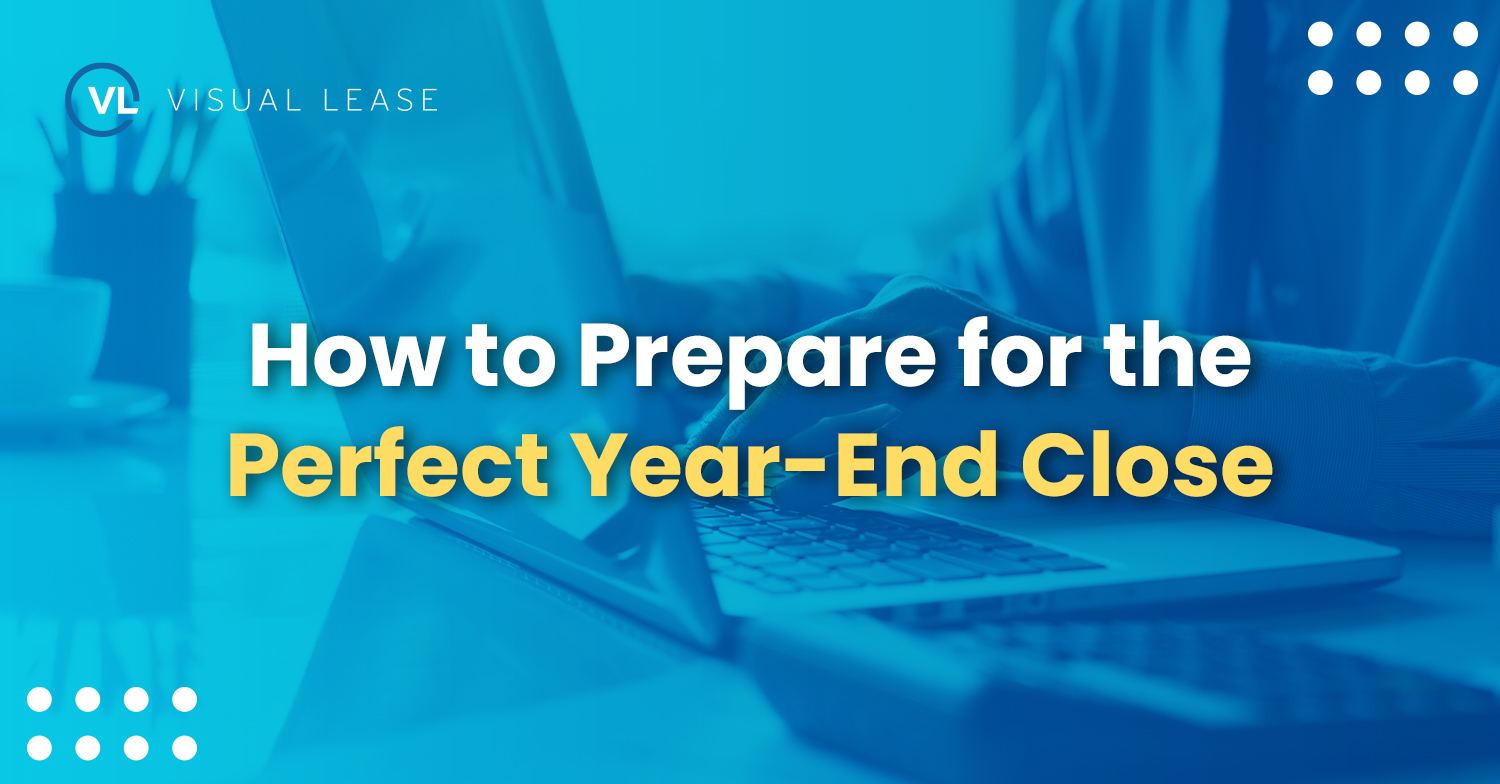
Accounting teams are often left scrambling to find lease information needed to wrap up the year and prepare for their audit.
As businesses approach year-end, how can they ensure an easier closing of the books? It starts by having visibility and control of lease information, maintaining strong lease accounting procedures and open communication between accounting and real estate teams throughout the year. Let’s take a closer look at these strategies.
The role lease accounting plays in a year-end close
Closing the books for the year is an annual process that most companies have to perform. Although this process can be tedious and time consuming, it’s vital to make sure all financial information about your business is accurate.
To be as efficient as possible, companies should work throughout the year to ensure processes are in place each month for a straightforward monthly close. A regular, clean month-end close sets businesses up to successfully and seamlessly execute a final closing of the books at the end of the year.
No year-end close checklist is complete without making sure all leases and related financial documents are up to date and correct. After all, for most businesses, the cost and value of their leases are second only to the cost of their people. As a result, if a company’s lease accounting information isn’t complete and accurate, it can lead to expensive errors (such as findings, like a material weakness, significant deficiency or control weakness) and waste time during the year-end closing process.
Monthly procedures to maintain accurate lease accounting
Without accurate lease accounting, businesses risk making costly mistakes. According to the Visual Lease 2021 Lease Accounting Readiness report, 99% of senior finance and accounting professionals surveyed at private companies expressed concern regarding several pitfalls of misreporting company lease information, including:
- Increased audit fees and fines (51%)
- Risk of legal action (48%)
To avoid these expensive risks and stay on top of monthly lease accounting, accounting teams should implement the following procedures.
- Centralize financial information for leases: A lease accounting software like Visual Lease can help keep track of this critical information for the company.
- Set a clear timeline: Ensure teams are on the same page and are on track to deliver all necessary information.
- Standardize all processes: Having a system for your lease accounting procedures allows your accounting teams to easily repeat them each month.
- Communicate regularly with the real estate team: Make sure your business’ real estate team knows what information they must relay to the accounting team and by when. It’s important to work with lease accounting software that can create a system audit trail and show what changes are made to which leases, who made the changes, and when.
If your accounting teams use the right lease accounting software, maintain clear expectations and processes, and collaborate with the real estate team, your business will have an easier and more accurate closing of the books each year. These steps also set up your company for financial success for years to come.























